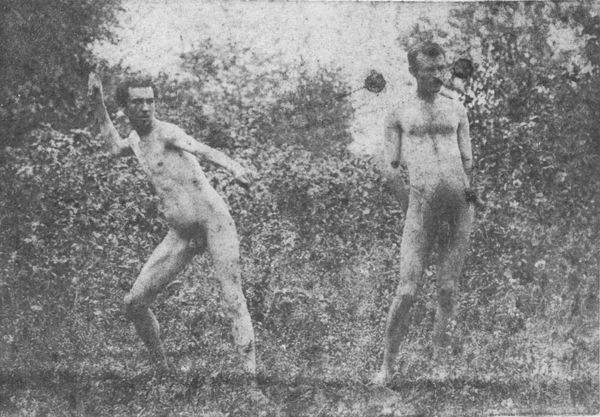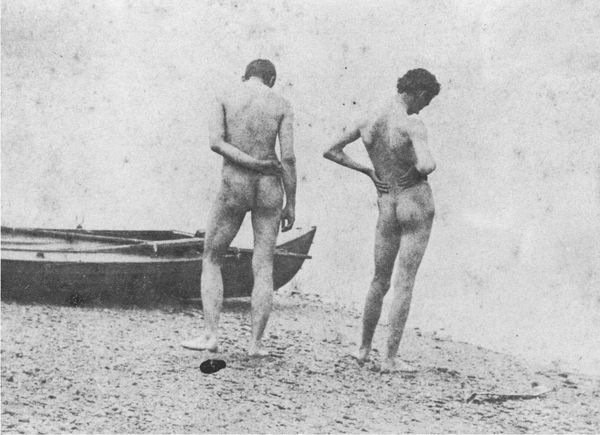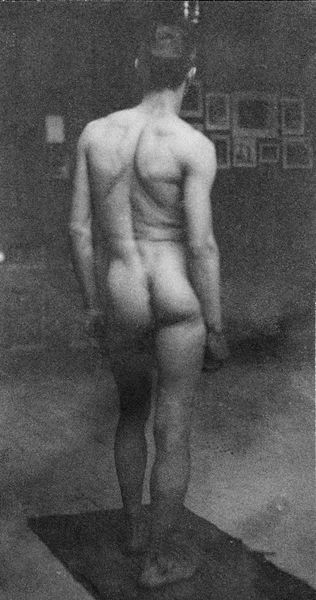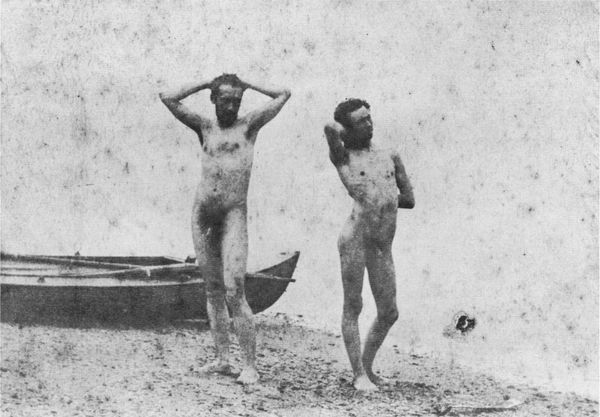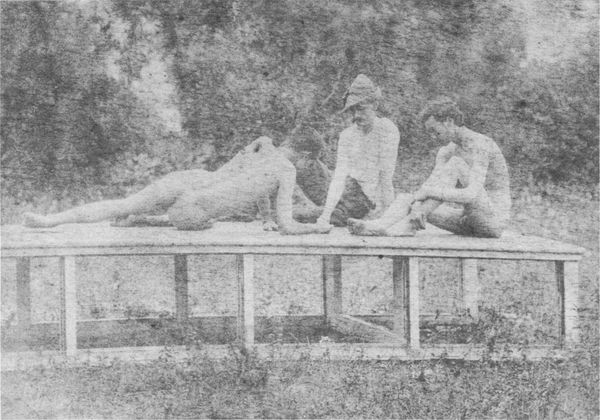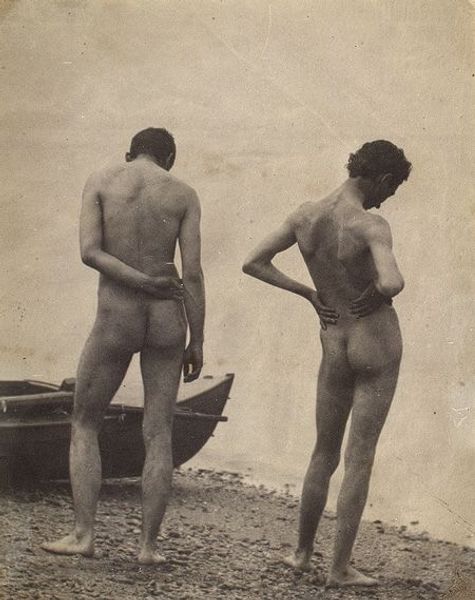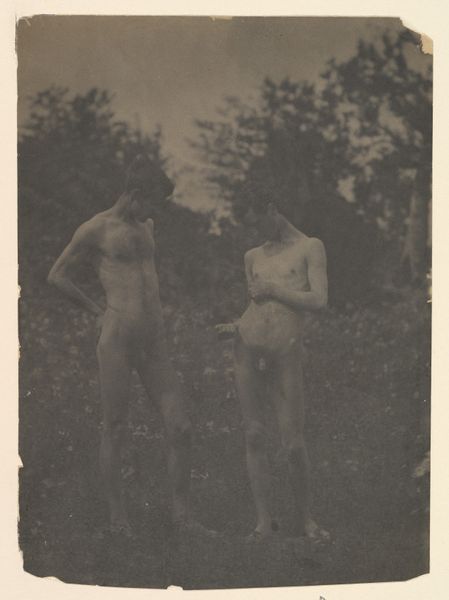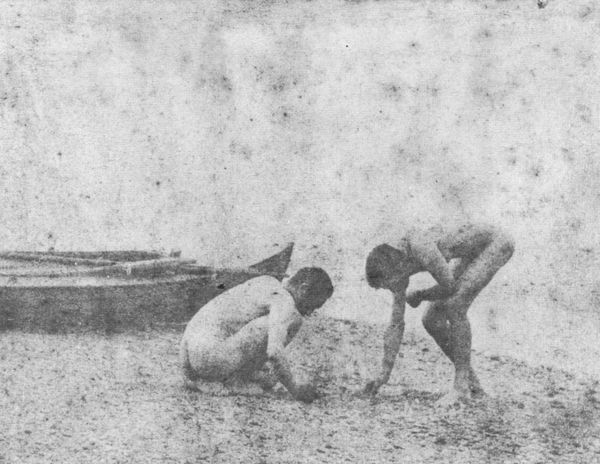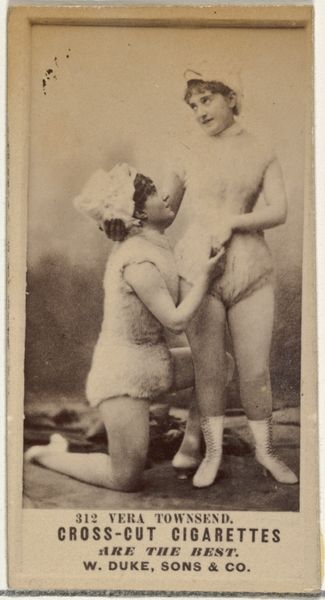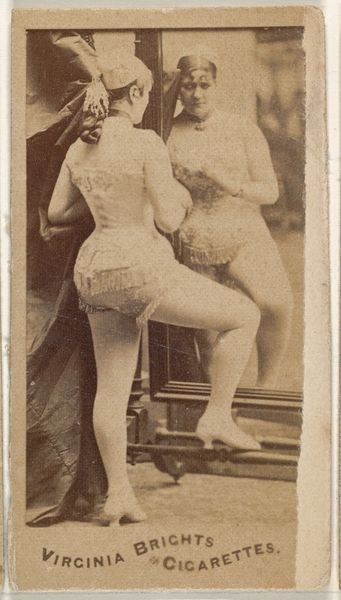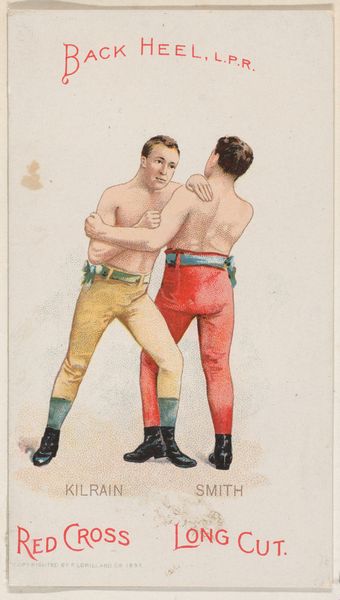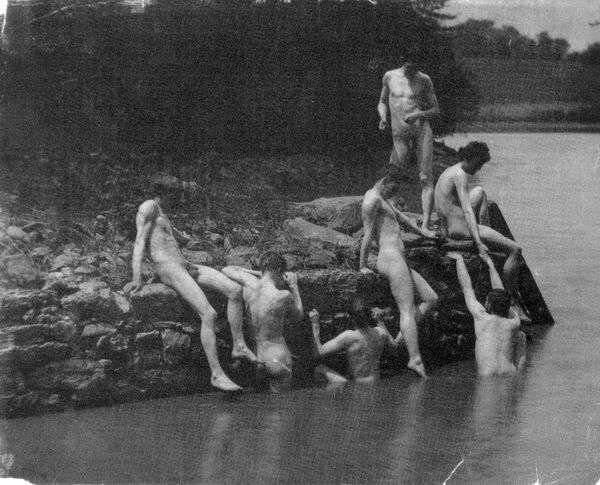
photography, gelatin-silver-print
#
portrait
#
black and white photography
#
black and white format
#
monochrome colours
#
photography
#
black and white
#
gelatin-silver-print
#
monochrome photography
#
genre-painting
#
academic-art
#
monochrome
#
nude
#
realism
Copyright: Public domain
Curator: Here we have "Unidentified model, Thomas Anschutz, and J. Laurie Wallace", a gelatin-silver print created in 1883 by Thomas Eakins. It captures a candid scene, almost a momentary glimpse into a private event. Editor: My first thought is about power, actually. The figures are captured in monochrome, the bodies taut, in the posture of fighting. I immediately think about physicality, gender, and the social construction of masculinity within that specific historical period. Curator: Absolutely, and within a broader art historical context, the fighting pose clearly echoes the depictions of classical antiquity; think Greek statues of athletes. Eakins returns again and again to images of young, male bodies, linking them to notions of strength and ideals that harken back to that period. Note how the composition almost intentionally alludes to this history of posing and power. Editor: Yet the presence of another clothed male figure supervising them makes it even more unsettling and points to underlying class issues. Here are white bodies trained to fight, implicitly referencing historical exploitation. How do we interpret his casual overseeing pose within that context? He literally frames the staged competition for his own viewing. Curator: An apt point. We could read the clothed figure as a representation of a contemporary societal framework that simultaneously enables but also restrains the combatants. I see echoes of rituals around masculine initiations into adulthood. Editor: That said, seeing it through a feminist lens shows that there is more going on than pure spectacle, which would be easier to dismiss. Instead, by visually echoing canonical artwork while deconstructing power through race and class awareness, he turns the familiar gaze on its head and suggests questions, not answers. Curator: It certainly prompts us to reflect on not only how ideals are perpetuated but who exactly benefits from this sort of controlled performance, or even who suffers under it. Editor: Precisely. It shows just how layered this photograph really is, revealing some quite uncomfortable perspectives when approached from multiple angles. It makes this piece relevant now.
Comments
No comments
Be the first to comment and join the conversation on the ultimate creative platform.
